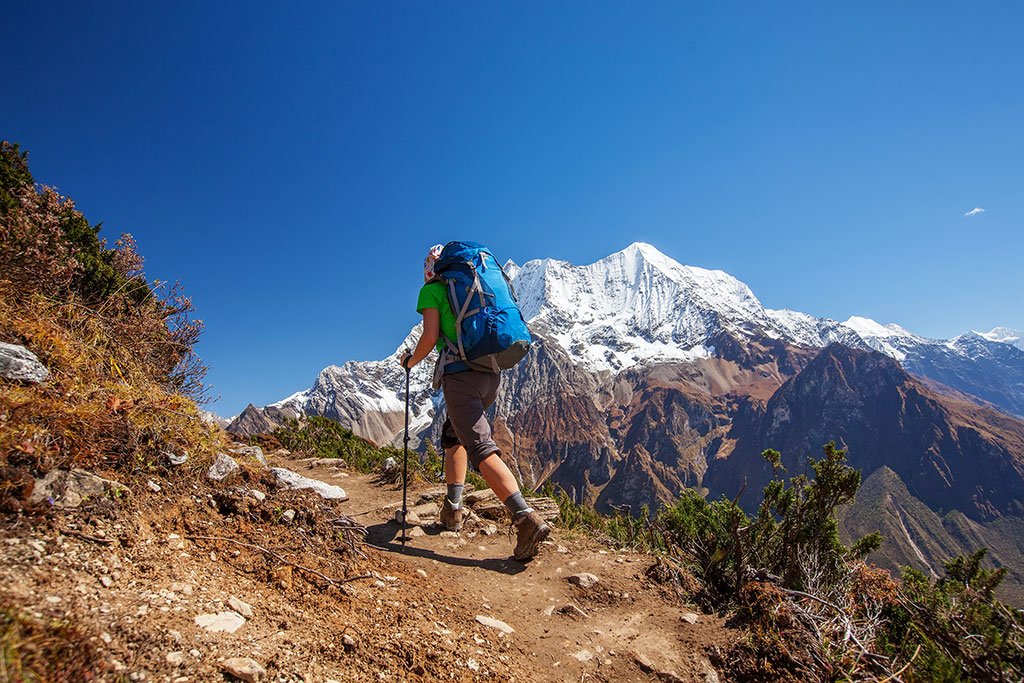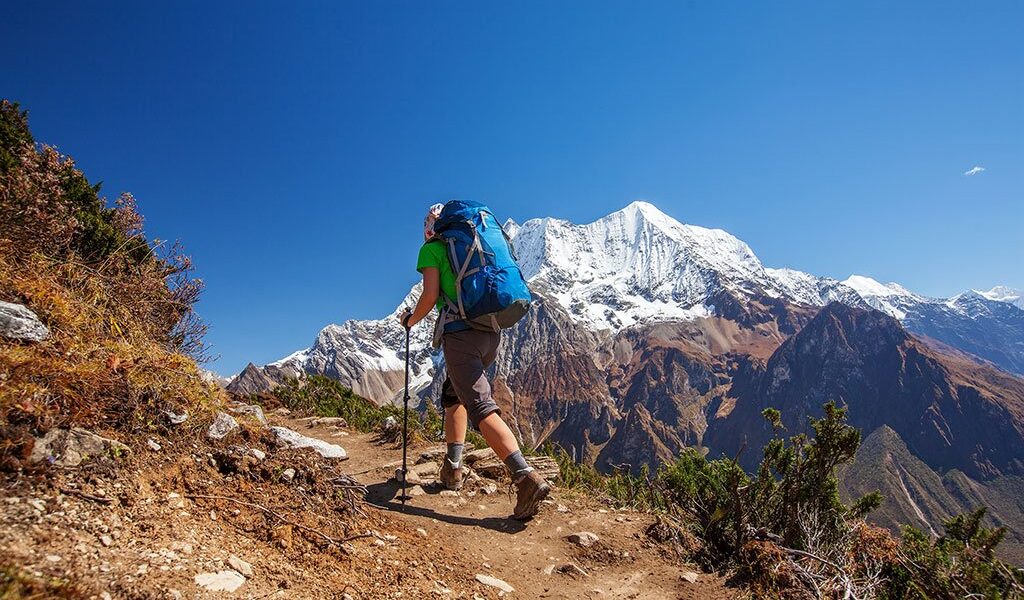
Nepal’s mountains are formidable, but Raj Gyawali says they can be accessible to almost anyone. Whether he’s leading a family tour, a special needs tour, or a niche tour, Raj says his trekkers will have the experience of a lifetime and leave Nepal with a sense of accomplishment.
## **Trekking Adventures: A Journey for Every Age and Ability**
“Families are absolutely welcome and perfectly suited for trekking adventures,” affirms Raj, a seasoned guide with extensive experience leading treks in the majestic Himalayan mountains. His expertise extends to accommodating trekkers of all ages, including children as young as three years old. Raj recounts a memorable experience with a particularly energetic three-year-old, who actively participated in a trek, alternating between walking independently and being comfortably carried by a porter in a specialized backpack chair. “The most surprising aspect,” Raj notes, “was that the parents seemed to struggle more with the physical demands of the trek than their children. Children often possess an incredible reservoir of energy and resilience.”
In another unforgettable trekking expedition, Raj recalls a remarkable five-year-old who demonstrated exceptional strength and determination. “He truly proved himself to be an incredibly capable trekker,” Raj says with admiration. “We had arranged for an extra porter to assist him if needed, but he ultimately never utilized their services. He embraced the challenge with enthusiasm and learned a great deal along the way.”
Learning and active engagement are fundamental to the success of any trekking experience, but these aspects are particularly crucial when children are involved. Raj firmly believes that a successful family trek hinges on a delicate combination of factors, including the group’s overall fitness level, the unique personalities of the children, and the dynamics within the family unit. “All of these elements play a significant role in shaping the overall experience and ensuring a positive outcome,” he emphasizes.
**(Image of a family’s vacation in Nepal would be inserted here)**
Raj, with his extensive experience, leads approximately four family treks each year. He enthusiastically shares a recent anecdote: “Just a week ago, we were exploring the breathtaking landscapes of the mountains, and my daughter, who is now just over seven years old, astounded me by covering an impressive 18 kilometers in a mere five hours.” While she experienced moments of boredom, her energy levels remained consistently high throughout the trek. Raj emphasizes, “The key to a successful family trek lies in maintaining engagement and fostering a sense of excitement and discovery.”
However, Raj offers an important cautionary note for families considering embarking on high-altitude treks: “When venturing into high-altitude environments, it is imperative to exercise caution with children, as they may not always be able to effectively communicate their discomfort or pain. It’s equally crucial to consider the parents’ understanding of how their children might react to the challenges of high altitude. To mitigate potential risks, it is generally advisable to avoid extremely high altitudes altogether.”
It’s important to be aware that symptoms of altitude sickness can manifest in various ways, including headaches, loss of appetite, and difficulty sleeping. Altitude sickness most commonly occurs when individuals rapidly ascend from lower altitudes to elevations of 8,000 feet or higher. As altitude increases, the air becomes thinner, prompting the body to compensate by increasing the rate of breathing, which can lead to headaches. Experts strongly recommend a gradual and measured acclimatization process to minimize the risk of altitude sickness.
## **Trekking: A Pursuit Accessible to All**
Raj emphatically states that trekking is an activity without age restrictions. “For older individuals, we adapt the hikes to ensure convenient road access and manageable terrain. However, the older trekkers who choose to visit Nepal are typically well-aware of their physical capabilities, and many possess remarkable resilience and endurance. They often arrive equipped with new knees or new hips, ready to embark on their adventure. Age is rarely a limiting factor,” he assures.
Raj fondly recalls his oldest trekker, an inspiring individual of 83 years. “But,” he adds, “we regularly welcome trekkers in their 70s. When working with older individuals, we often incorporate a variety of activities to enhance their experience. This might involve a combination of shorter hikes, cultural immersion, and extended stays in local villages. This approach has proven to be incredibly successful.”
## **Creating Barrier-Free Trekking Experiences**
Raj emphasizes, “Nepal is not solely defined by its towering mountains. While many associate Nepal with its extreme altitudes, we have the flexibility to tailor the terrain to accommodate the specific needs of each individual.”
He has guided treks that have included disabled children, a woman with 80 percent visual impairment, and an individual with obesity. He confidently asserts that he could easily envision an amputee utilizing a prosthetic blade for trekking, as well as an athlete employing a specialized wheelchair. “There are now advanced wheelchairs designed specifically for navigating challenging terrains, but it’s certainly a demanding endeavor,” Raj acknowledges.
“Ultimately, it all comes down to the individual,” Raj explains. “What I’ve come to realize is that leading treks for people with special needs is often easier than leading treks for those without. This is because individuals with special needs are typically accustomed to overcoming physical challenges and are more likely to communicate their limitations openly and honestly. Able-bodied individuals, on the other hand, may overestimate their abilities, suffer in silence, and express their frustration later.”
Raj recounts an instance where a group of special needs trekkers dedicated a year to preparing for their adventure, while the other members of the group did not. “The able-bodied individuals assumed they would be fine without any specific preparation. Of course, they were mistaken. The individuals who faced the greatest challenges were, in fact, the able-bodied trekkers.”
Raj advocates for integrating special needs trekkers into mixed-ability groups. “Rather than exclusively comprising the group of special needs individuals, it’s beneficial to include caregivers and other supportive participants,” he suggests. “This creates a wonderful dynamic within the group, fostering learning, laughter, and camaraderie. While it presents its own set of challenges, the sense of accomplishment when they overcome those challenges—we’re not attempting to summit Everest, after all—is incredibly profound.” The level of satisfaction is very, very high for everyone involved.
B-1810

